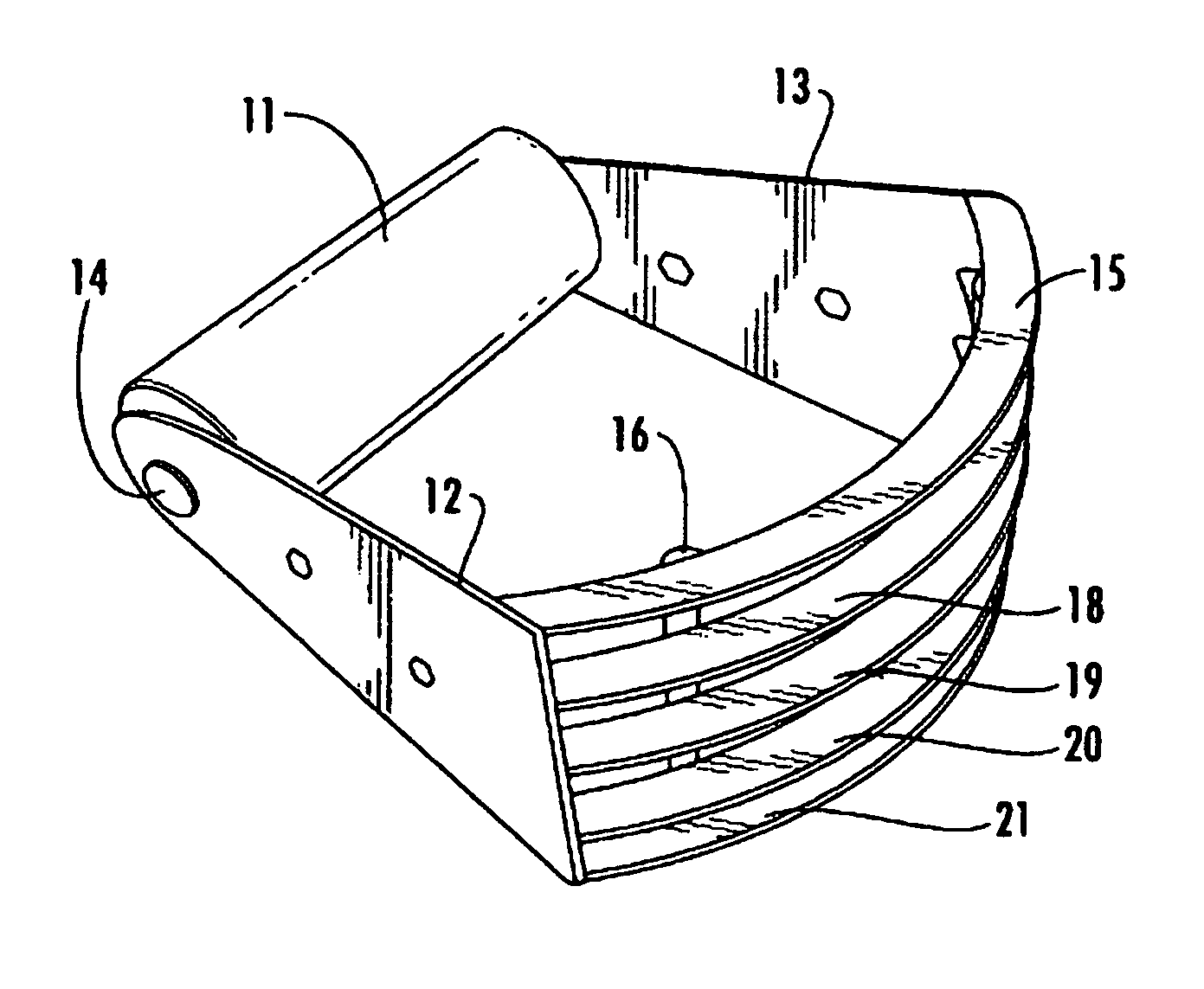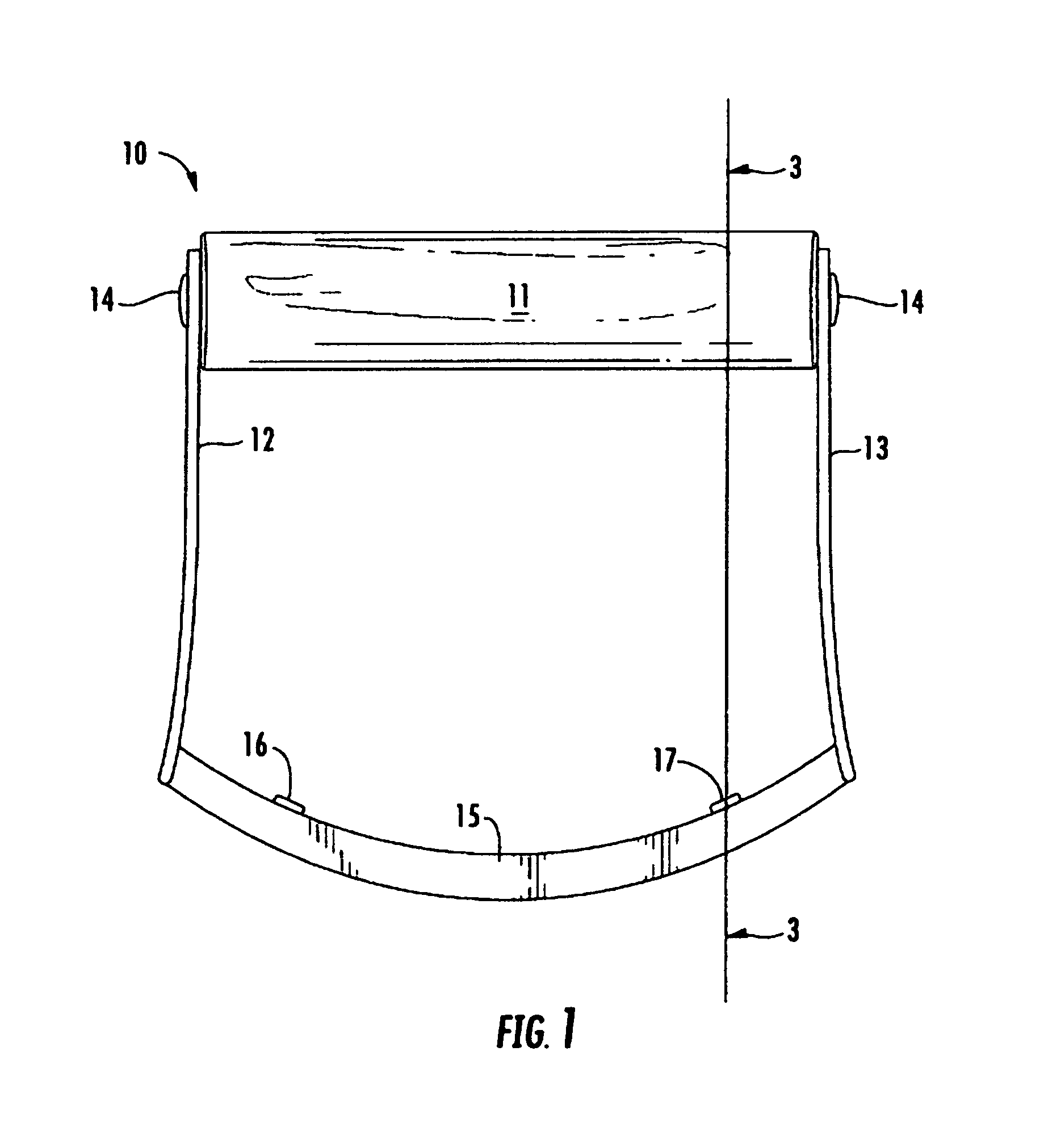Meat tenderizer
a meat tenderizer and blade technology, applied in meat tenderising, butchering, piercing-based meat tenderising, etc., can solve the problems of difficult cleaning of prior art meat tenderizers, accidental cuts to users, children learning to cook, etc., to reduce the depth of impression of meat blades, easy to clean by hand washing or in the dishwasher, and convenient storage
- Summary
- Abstract
- Description
- Claims
- Application Information
AI Technical Summary
Benefits of technology
Problems solved by technology
Method used
Image
Examples
Embodiment Construction
[0012]Referring now to FIG. 1, therein is shown a side view in full of a preferred article 10 of the instant invention. The article 10 comprises left side plate 12 and right side plate 13 constructed of 14 gauge stainless sheet steel. A wooden handle 11 is attached at each end thereof to the upper end of the side plates 12 and 13 by stainless steel rivet 14. The article 10 also comprises a plurality of convex 14 gauge stainless sheet steel blades, one of which blades is the blade 15 attached at each end thereof to the lower end of side plates 12 and 13 by welding. A cross bar 16 constructed of 14 gauge stainless sheet steel is welded to the back side of the blade 15. A cross bar 17 constructed of 14 gauge stainless sheet steel is welded to the back edge of the blade 15.
[0013]Referring now to FIG. 2, therein is shown an end view in full of the article 10 shown in FIG. 1. Right side plate 13 is perforated with decorative apertures 22 and 23. FIG. 2 also shows curved blades 18, 19, 20 ...
PUM
 Login to View More
Login to View More Abstract
Description
Claims
Application Information
 Login to View More
Login to View More - R&D
- Intellectual Property
- Life Sciences
- Materials
- Tech Scout
- Unparalleled Data Quality
- Higher Quality Content
- 60% Fewer Hallucinations
Browse by: Latest US Patents, China's latest patents, Technical Efficacy Thesaurus, Application Domain, Technology Topic, Popular Technical Reports.
© 2025 PatSnap. All rights reserved.Legal|Privacy policy|Modern Slavery Act Transparency Statement|Sitemap|About US| Contact US: help@patsnap.com



